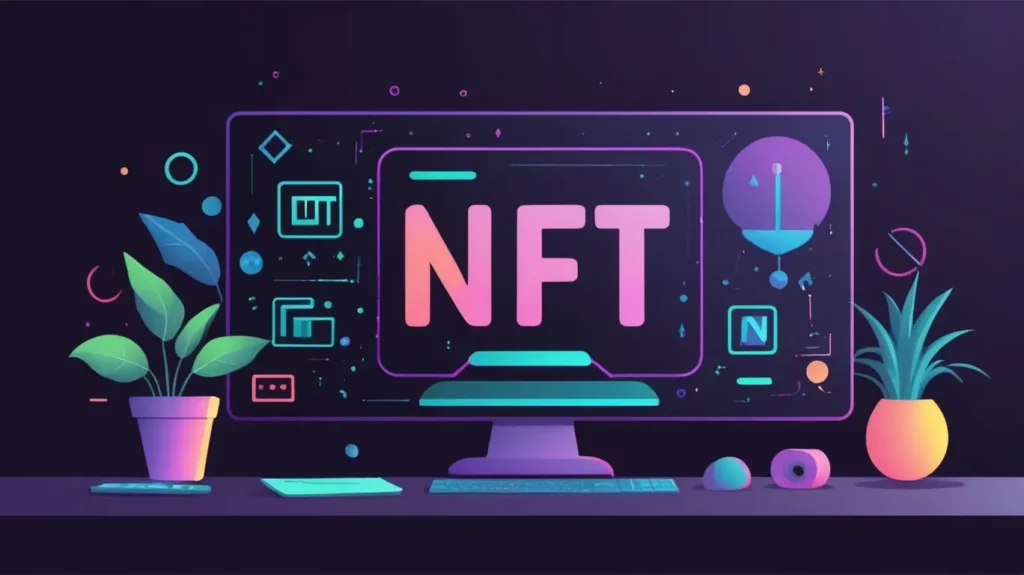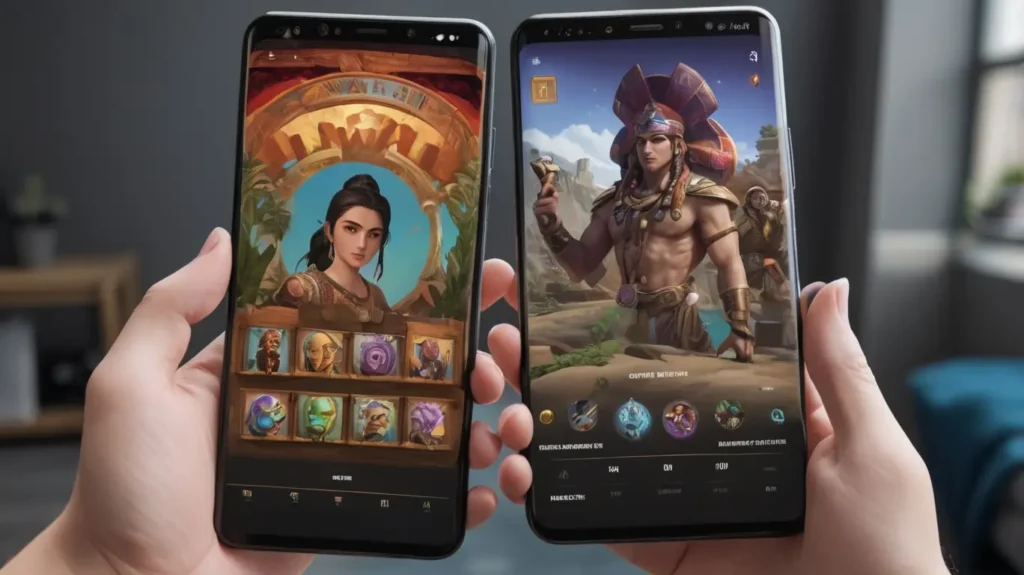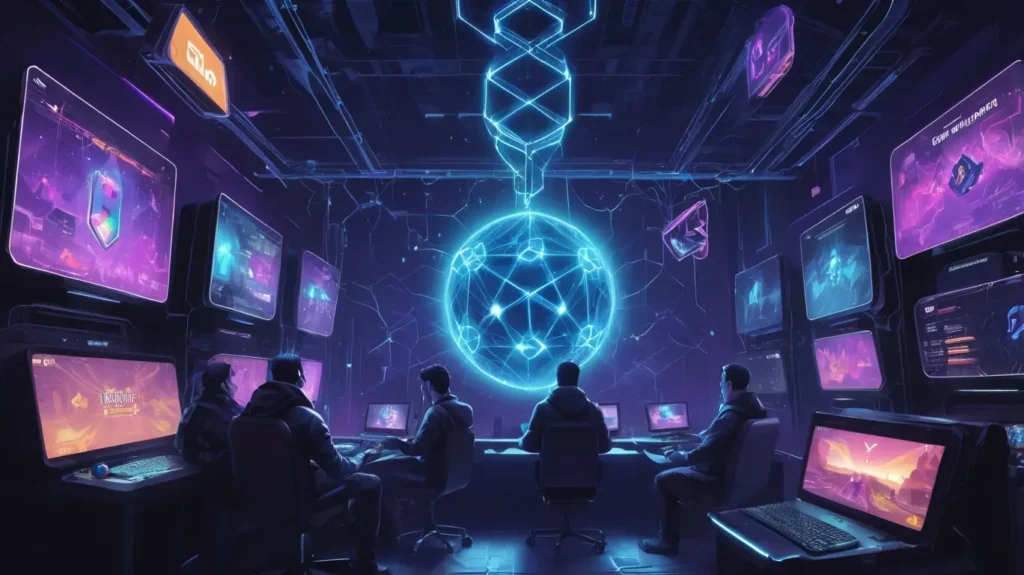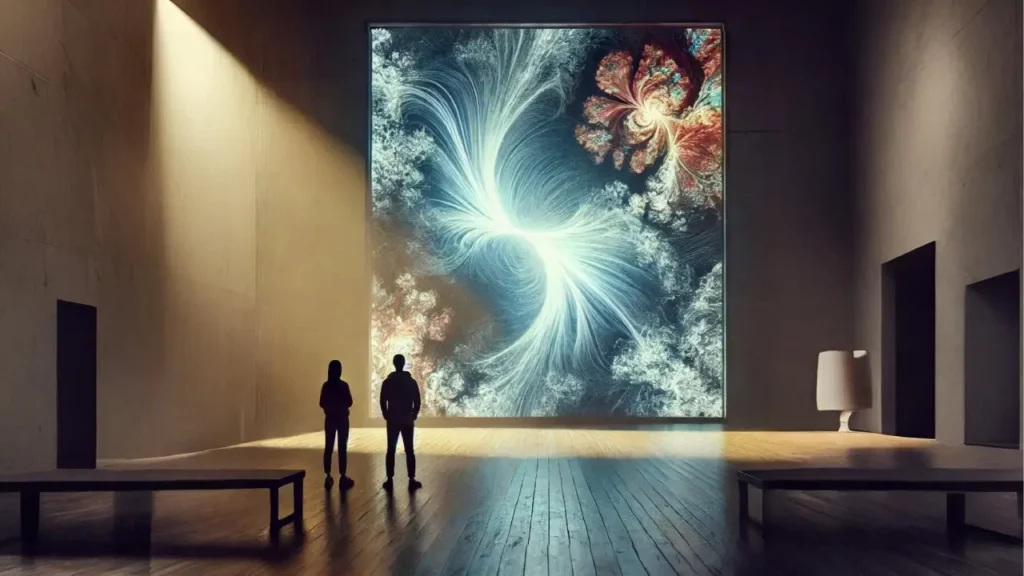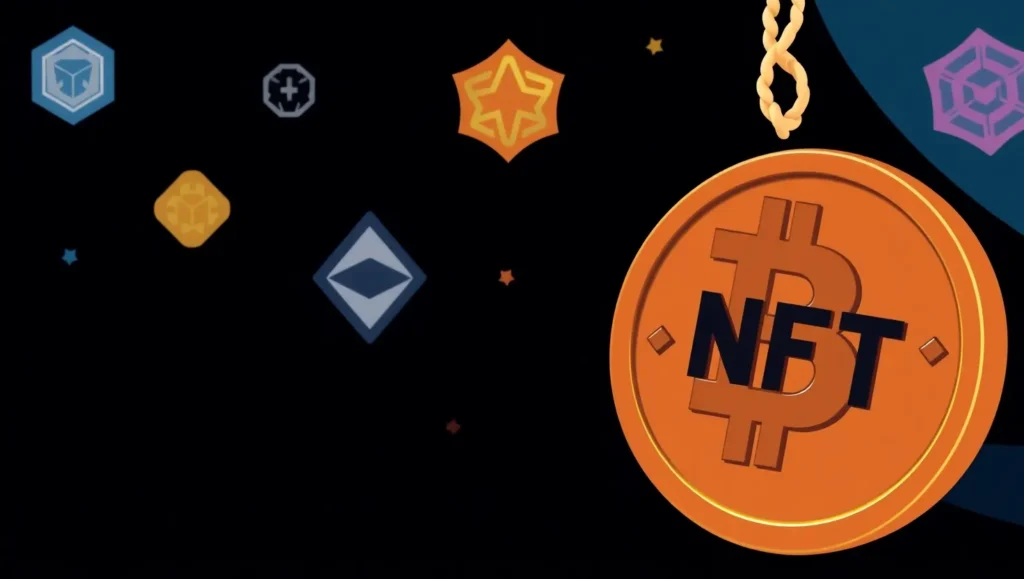In the rich narrative of art history, few elements shine as brightly or are as puzzling as the development of generative art. As we take a stroll through its vibrant timeline, it’s worth considering how mathematics and creativity have intertwined to create pieces that push our ideas of authorship and originality. This conversation isn’t only about works produced by machines; it’s also about the fascinating interplay between humans and algorithms that leads to the unexpected. In today’s article, we’re going through the history of generative art to generate all the knowledge there’s about this magnifying field of work.
Unveiling the History of Generative Art: From Ancient Algorithms to AI Aesthetics
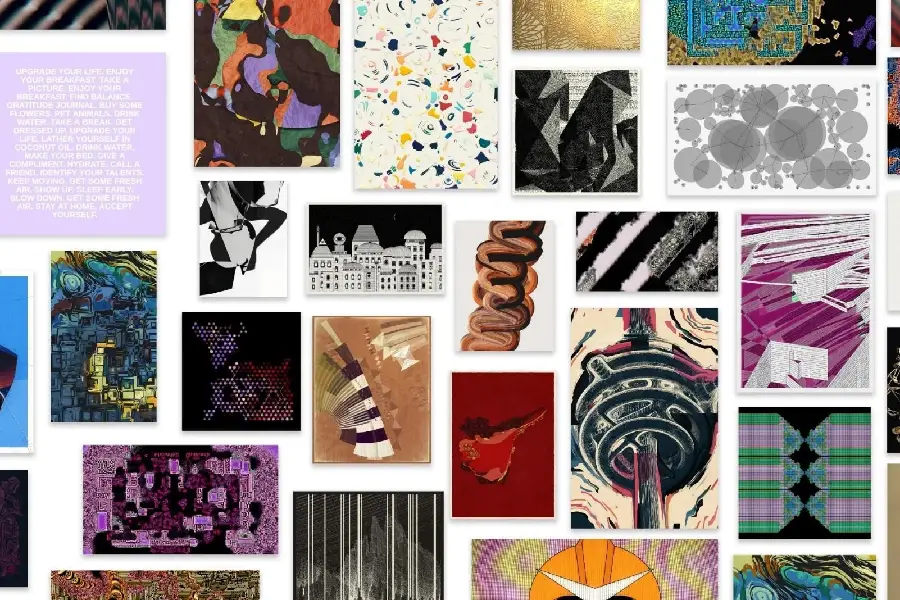
The History of Generative Art: A Vibrant Evolution
1. Early Foundations: Enigmatic Beginnings
Imagine stepping into an ancient sanctuary, where the walls are draped in mesmerizing geometric patterns an artistic testament to the grandeur of Islamic art. These intricate designs are more than mere decoration; they embody a sophisticated form of algorithmic art, where precise mathematical principles create harmony and symmetry. Artisans of the Islamic Golden Age, with their profound understanding of geometry, crafted these patterns to reflect deeper spiritual and philosophical meanings. As these mathematical marvels silently graced mosques and palaces, they laid foundational stones for future generations of generative artists.
Centuries later, during the Renaissance, a newfound obsession with science and perspective prompted artists to harness similar concepts. Leonardo da Vinci, for instance, employed grid systems to infuse his masterpieces with depth and realism. This precision allowed for the meticulous crafting of proportion and perspective, elements that became hallmarks of Renaissance art. Through these carefully measured techniques, artists aimed to mirror the natural world’s order and beauty, much like their Islamic predecessors.
Such algorithmic thinking absorbing influences from both Islamic and Renaissance contexts prepared the ground for the serendipitous aesthetics that would emerge in the modern era. By marrying structure with creativity, these early foundations challenged artists to think beyond the canvas in the history of generative art, setting the stage for the algorithmic adventures that awaited.
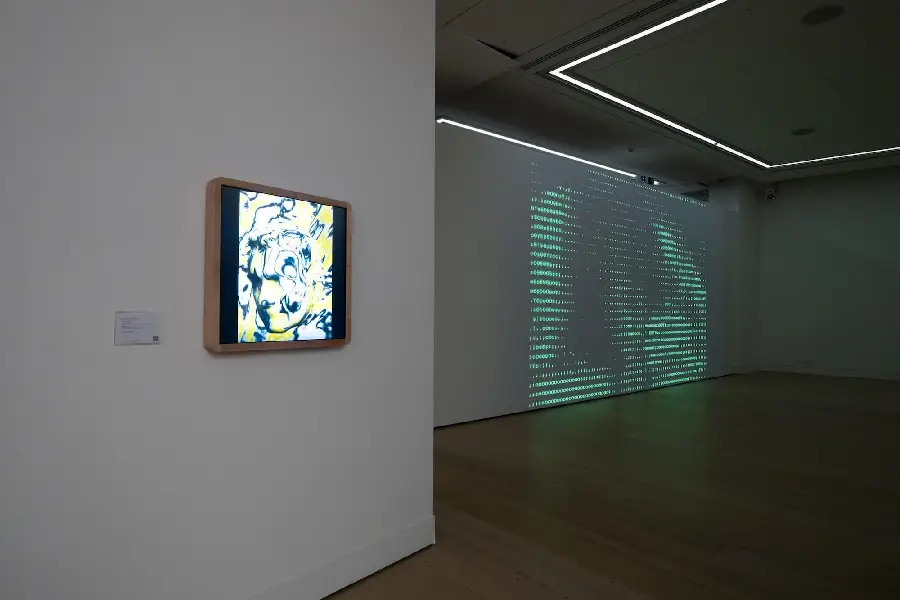
2. Dadaism and Surrealism: Embracing Chaos
Fast forward to the early 20th century, and we find ourselves in the whimsical and often perplexing realms of Dadaism and Surrealism. These avant-garde movements, birthed from the upheavals of World War I, rejected the rationality and logic that had defined prior art forms. Instead, they celebrated chaos and the serendipity of chance, turning unpredictability into a source of creative inspiration.
Dadaists like Marcel Duchamp defied conventional aesthetics by introducing “ready-mades” objects lifted to art status by the artist’s choice. Duchamp’s infamous urinal, titled “Fountain,” flips art on its head, inviting viewers to question the boundaries between art and object. In a similar vein, Surrealists such as Max Ernst utilized techniques like frottage and grattage, allowing chance textures to dictate the visual outcome. These methods uncovered latent images, transforming accidents into points of artistic interest.
Through their embrace of randomness, these movements sowed the seeds for what we now recognize as generative art and they made the history of generative art. By loosening control over the artistic process, Dadaism and Surrealism disrupted norms and ushered in a new era where the unpredictable became a celebrated component of creation. This embrace of disarray would resonate through time, influencing the algorithmic arts of the digital age.
3. Mid-20th Century Developments: A Glimpse Into Innovation
The narrative of generative art leaps forward to the 1950s, a period ripe with technological exploration and artistic experimentation. It was during this time that Max Bense, a German philosopher and poet, introduced the world to algorithmic abstract art. Bense believed that aesthetics could be quantified and that beauty could be distilled through mathematical formulas. This radical approach challenged the traditional notions of artistic creation, proposing that computation itself could yield aesthetic pleasure.
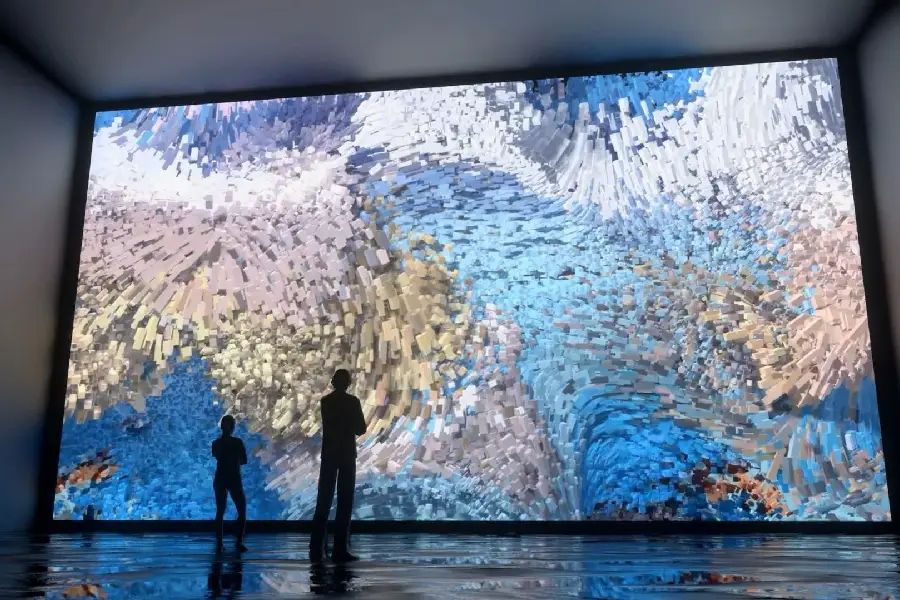
Bense’s work laid a crucial foundation for artists like Harold Cohen, who, in the 1970s, developed AARON one of the first successful AI programs capable of creating art autonomously. AARON’s vibrant canvases, filled with abstract forms and dynamic colors, captivated audiences and sparked intense dialogues around the capabilities of machines in creative fields. Unlike human artists, AARON operated without intuition or mood, yet its creations were imbued with strange vitality and coherence.
These mid-20th-century innovations were pivotal in redefining what machines could achieve. By moving beyond mere calculation, artists and technologists alike questioned the essence of creativity and the role of algorithms in artistic processes. These pioneering efforts demonstrated that machines could indeed become partners in the artistic journey, paving the way for future explorations in generative art.
4. Advancements in the 1980s and 1990s: Evolutionary Insights
As we entered the latter part of the 20th century in the history of generative art, the boundaries of generative art expanded dramatically, propelled by visionary artists like Karl Sims. Sims harnessed the power of artificial life and evolutionary algorithms, simulating natural selection processes in digital environments. Imagine a virtual realm where digital “organisms” evolve, competing and adapting to their surroundings with each iteration. Sims’ groundbreaking work allowed these digital entities to generate artworks, effectively merging biology with technology in the creative sphere.
His installations, such as in “Evolved Virtual Creatures,” showcased this interplay between computation and evolution, producing dynamic visual forms that challenge our understanding of the creative process. By using evolution as a generative tool, Sims demonstrated that creativity could be nurtured through competition and adaptation, not unlike the biological processes that shape the natural world.
Simultaneously, fractal art took root during this period, drawing artists and mathematicians alike into its intricate web of patterns. Fractals complex structures that emerge from simple mathematical equations captivated audiences with their infinite levels of detail and mesmerizing self-similarity. Concepts such as the Mandelbrot Set revealed how infinite complexity could reside within finite boundaries, offering a new perspective on the intersection of mathematics, nature, and art. The visual allure of fractals underscored a growing desire to explore the mathematical underpinnings of aesthetic experience, opening new doors for generative art exploration.

5. The Digital Revolution: Art in a New Era
As the millennium approached through the history of generative art, a digital renaissance transformed the art world. With advances in technology, artists found themselves armed with innovative software tools that dramatically expanded their creative toolbox. Imagine an artist’s palette now loaded with arrays of pixels, algorithms, and digital canvas tools that allowed for unprecedented exploration and experimentation. The rise of personal computers and graphic tablets democratized access to these tools, enabling artists everywhere to push the limits of their creativity.
This period also saw the Internet revolutionize artistic collaboration and distribution. Artists could now share their work, code, and techniques with a global audience, forming communities that transcended geographical barriers. Platforms like DeviantArt and online forums became hotbeds of innovation, where artists and technologists collaboratively advanced the frontier of generative art. This digital interconnectedness democratized artistic processes, allowing anyone with a computer to become a creator.
The digital revolution marked a pivotal shift art was no longer confined to physical mediums or individual creators. It evolved into a shared, community-driven process, enriched by diverse inputs and collective ingenuity. This era exemplified how technology could break down the walls of traditional art forms, leading us into uncharted creative territories.
6. 21st Century Innovations: The Era of AI
The 21st century ushered in groundbreaking advances with the emergence of Artificial Intelligence, particularly with Generative Adversarial Networks (GANs) when we talk about the history of generative art. These innovative neural networks, consisting of a pair of systems that generate and critique art simultaneously, revolutionized the way artworks were created. GANs excelled in producing photorealistic images and abstract compositions that not only astonished audiences but also sparked intellectually stimulating conversations about creativity.
The world witnessed projects like “Edmond de Belamy,” an AI-generated art piece that fetched over $432,000 at auction, signaling the fine art world’s acceptance of AI as a creative collaborator. Such creations prompted debates about authorship and ownership, as GANs and their creators navigated the complex landscape of intellectual property in digital art. AI-driven art was increasingly featured in respected galleries and exhibitions, reflecting a shift in public perception and artistic acceptance.
AI’s integration into art creation challenges us to reevaluate human creativity’s boundaries and the role machines play in this domain. These technologies invite us to ponder the possibilities of collaborative creation, where human intuition and algorithmic prowess converge to produce works of profound complexity and beauty. As AI continues to evolve, we stand on the precipice of a new artistic era defined by synergies between human imagination and artificial intelligence.

7. Contemporary Applications and Future Directions: Beyond Canvas
Today, generative art transcends traditional media, infiltrating music, architecture, and design. Musicians compose symphonies alongside AI, architects envision dynamic structures that respond to their environment, and designers craft bespoke patterns at the push of a button. Yet, as possibilities expand, so do ethical debates. Who owns the art? What is the artist’s role when machines contribute creatively? These questions linger as we peer into the future, where technology and creativity will likely continue their intricate waltz.
Music: Harmonizing with Algorithms
In the realm of music within the history of generative art, generative principles power innovative compositions where musicians and AI collaborate to create symphonies that resonate with both human emotion and computational logic. Tools like Amper Music and OpenAI’s MuseNet allow composers to experiment with new sonic possibilities, blending genres and styles in unprecedented ways. Musicians are no longer limited to conventional instruments or structures; instead, they can explore vast auditory ecosystems where AI can suggest new harmonies, rhythms, and melodies. This collaboration opens doors to novel auditory experiences, where human intuition and machine ingenuity compose in harmony.
Architecture: Buildings as Living Organisms
In architecture, generative design is redefining how structures are conceptualized and realized. Architects utilize algorithms to envision buildings that adapt and respond dynamically to their environments. Imagine structures that change shape or function based on weather conditions, occupancy, or even time of day. Parametric design tools enable the exploration of countless iterations and forms, allowing architects to optimize buildings for sustainability, aesthetics, and functionality. Projects such as the algorithmically designed “Clover House” by MAD Architects exemplify this innovative approach, highlighting how technology integrates seamlessly into the built environment.
Design: The Bespoke at a Button’s Press
In design, generative methods enable the creation of intricate, bespoke patterns and products with just a few keystrokes. Designers can quickly generate countless variations of a concept, refining them in real-time to suit specific needs or aesthetic preferences. This capability is particularly transformative in fields like fashion and interior design, where personalization and exclusivity are paramount. From custom clothing patterns to unique furniture designs, generative tools empower designers to push creative boundaries, crafting personalized experiences for clients.
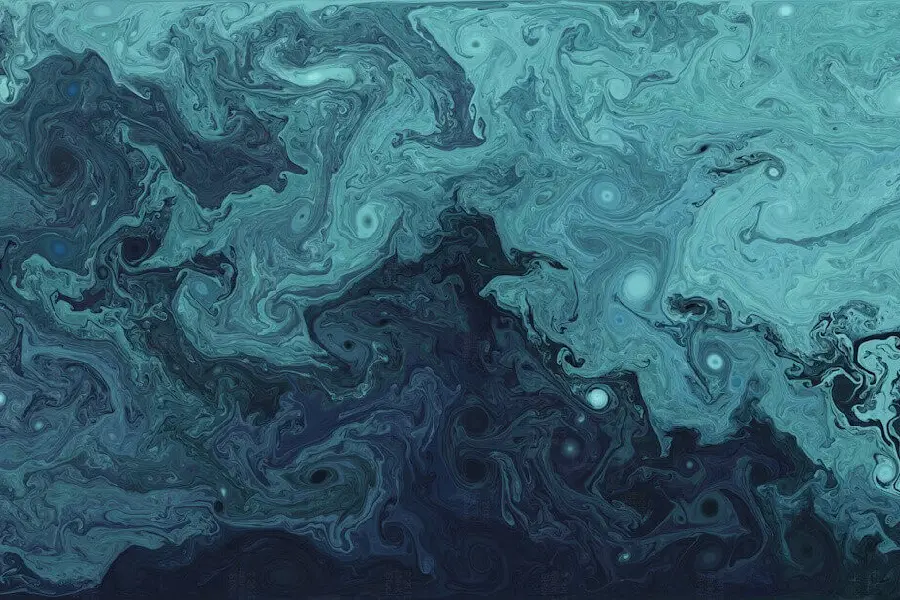
Concluding Thoughts: Reflecting on Creative Frontiers
In tracing the history of generative art, we navigate a landscape rich with innovation and inquiry. Each phase of this journey from the geometric wonders of ancient civilizations to the algorithmic marvels of today challenges preconceptions and expands horizons. As we stand at the cusp of endless possibilities, the fusion of human intuition and machine intelligence invites us to redefine creativity for generations to come.
1. How does generative art differ from traditional art forms?
Generative art differentiates itself by using algorithms and computational processes as core components of its creation. Unlike traditional art forms where the artist manually creates each piece, generative art involves a set of rules or systems that guide the art-making process, which can lead to unpredictable and complex results.
2. Can anyone create generative art, or does it require special skills?
While having a background in coding or mathematics can be helpful, many modern tools and platforms are designed to be accessible to non-programmers. Artists can use these tools to explore generative art without extensive technical knowledge, allowing creativity to flourish within user-friendly digital environments.
3. What future developments can we anticipate in the field of generative art?
The future of generative art is likely to be marked by further integration with emerging technologies such as augmented reality (AR) and virtual reality (VR). These advancements could offer new immersive experiences, blending physical and digital art spaces, while ongoing advancements in AI might continue to push the boundaries of what machines can create in collaboration with human artists.
